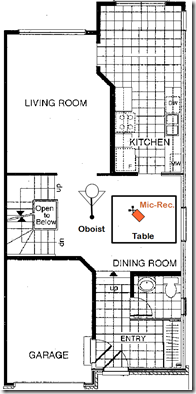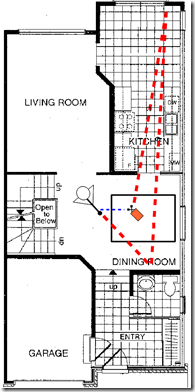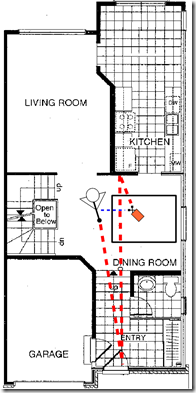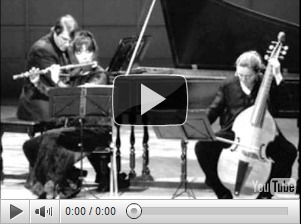A week has passed now since I posted my recording of Telemann’s Sonata in A minor for oboe and I have received kind compliments, thank you so much!
After listening to it over and over again, there are a few remarks that should be made:
- Obviously, I still need more stability, especially on that 1st octave-key E-natural. My dynamics are inhibiting the tuning, but they are supposed to help each other out. I hope that a few more months of practice will take care of that. Although the hot humid weather did affect my reed, I cannot blame it nor my Lorée as both were definitely good enough for the task.
- There are some very strange sound effects happening – on my word, I did not tweak the oboe part with software! – and a little acoustic analysis might help explain them.
- As for stability of rhythm… yep, needs work… let’s just not talk about it!
Interpretation style:
Over 15 years ago, I had the immense privilege of being taught by 2½ members (the 3rd was a coach at a master-class) of the Ensemble Arion: one of Canada’s most pioneering ensembles that really ushered-in baroque performance practice on replicas of period instruments. These remarkable musicians, extraordinary teachers passionate about their work and simply really fine people flourished into what is now the Arion Baroque Orchestra.The Ensemble Arion practiced one type of baroque interpretation they retrieved from their research-teachers in Europe during the 1970-80’s (I think it was this time). They emphasise the discordant notes and the rhythms in motion rather than the destination/resolution notes. They once said in a master-class that Baroque music savours the musical journey whereas Romantic music must emphasise the ends of phrases because they’re glad it’s over! ![]() Yes, they got huge laughter and applause!
Yes, they got huge laughter and applause! ![]() This is how I approached the first and last movements in the sonata. The two middle movements sort of told me how they wanted to be played.
This is how I approached the first and last movements in the sonata. The two middle movements sort of told me how they wanted to be played.
Home Acoustics: be careful!
In the few weeks preceding this recording, I had found that playing in the dining area gave a more living sound than cooped-up in my dry muffled studio. In my first few recordings, where I placed the microphones adds buzz and makes the sound ridiculously bright. But I found that as long as I keep it beside me, one microphone pointing at me, the other one backwards, then the recorded sound is truthful. However, the dining area (open to the kitchen, the entrance, the living room and even to the floors above and below) has its own quirks.
- In the 2nd movement (especially), there are really parts that sound like 2 oboes are playing in unison.
- There are places I moved my body closer to and farther away from the microphone in order to emphasise crescendi and diminuendi…. this backfired making the fortes sound muffled and the dolces sound harsh.
For the double-sound, I really think it has to do with the echo and the double-microphone (stereo) used by my recording device. Possibly (but I’m not certain), when compressing the stereo oboe track into a mono track to have the piano sound more to the left and the oboe sound more to the right, the software I used might have accentuated that echo that I did not hear when plugging my head-set into the recording device directly.
 |  |  |
The first image shows where I chose to set-up my recording device. It is to the side of the oboe with one microphone pointing backwards because experimentation showed that this prevents buzz and gets the most realistic sound from my instrument. The two other images show potential sources of echo where the 2 microphones might have actually bee recording different sources.
The issue of the dynamics is much easier to explain: the microphones were lying flat on a table and I was standing very close to that table:
- We naturally want to move closer to the microphone to make fortes stronger and move away to soften dolces. But the top image shows that in my setup, the exact opposite happened: turning towards meant the table blocked a lot of the sound and turning away meant the entire room bounces even more sound to the microphone.
- When breathing-in, fully using the diaphragm and abdomen makes my back bellows which naturally curves me downwards. So the most powerful fortes puts my bell below the table… crescendo broken!
There are other issues: the microphone too far adds buzz to the sound, but too close gives a stuffy sound with all the key-clicks and other sounds the audience should not hear. So more experimentation with home acoustics is definitely required!

No comments:
Post a Comment